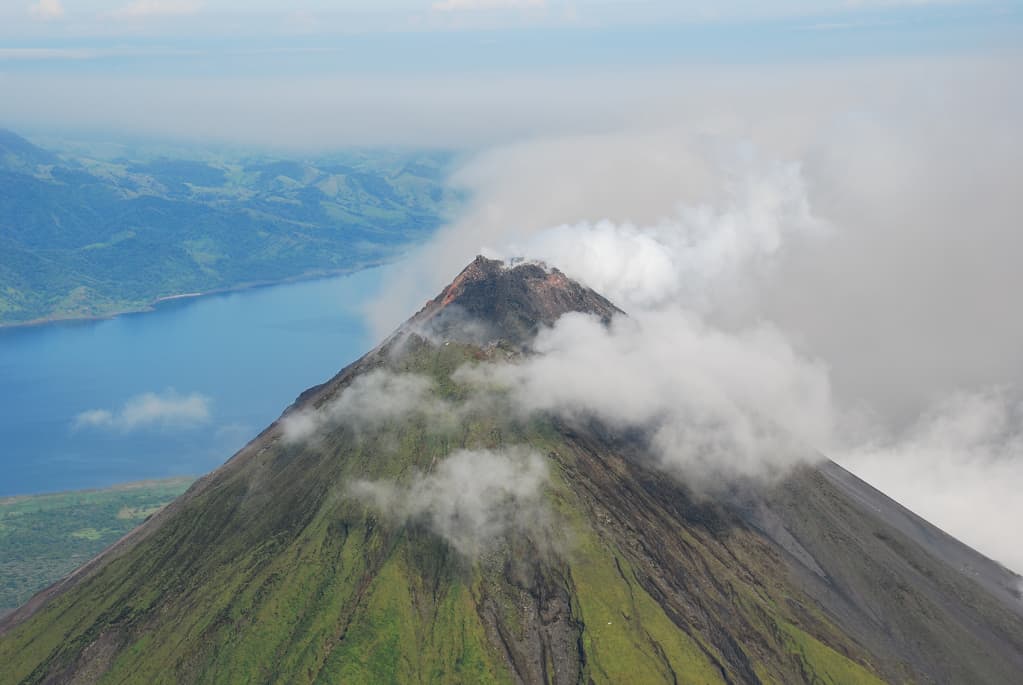Recent volcanic activity in El Salvador and Guatemala has Central American geologists keeping an eye on the region’s volcanoes, including Costa Rica’s Rincón de la Vieja.
While Rincón de la Vieja and other Tico volcanoes have seen increased activity in recent years, geologists don’t foresee any immediate eruptions related to these giants.
Smoke and ash spewing from the Chaparrastique Volcano after an “explosive eruption,” according to Celina Kattán, director of the Environmental Observatory, delayed air traffic over El Salvador on Dec. 29, 2013.
Salvadoran authorities ordered the evacuation of some 500 residents.
Guatemalan authorities reported that the Fuego Volcano erupted on Jan. 7, launching a column of smoke and ash into the air.
Days later, on Jan. 11, Guatemala’s Pacaya Volcano erupted, triggering the evacuation of nearby communities. Air traffic control there recommended precautions for aircraft flying nearby.
Professor and investigator Eliecer Duarte of the Volcanological and Seismological Observatory of Costa Rica noted that Costa Rica, along with its Central American neighbors, lies between the Cocos and Caribbean tectonic plates. But there’s no set “formula” for predicting volcanic activity, even if it takes place between the same plates.
“We’re talking about a pretty broad area,” he said, noting the distance between Guatemala and Costa Rica – about 1,200 kilometers capital to capital.
Duarte did say, however, that seismic activity elsewhere along plate lines could produce “instability.”
Gino González, geologist with the National Seismological Network at the University of Costa Rica (UCR-RVS) agreed.
González said that earthquakes along fault lines can trigger increased seismic and volcanic activity across the region, but there’s not necessarily any direct connection between volcanic activity in Guatemala and here.
The UCR geologist said that volcanoes in Costa Rica are less likely to ooze lava, the way Guatemala’s Pacaya Volcano does. Rather, Tico volcanoes build up pressure and suddenly erupt, making them “a little more dangerous.”
One volcano that volcanologists have had an eye on in recent years is Rincón de la Vieja, a 2-kilometer tall volcano in Costa Rica’s northwestern Guanacaste province.
After a decade of calm, the volcano has been increasingly active starting in 2011, according to a Jan. 14 report from UCR-RVS. After the 2012 Sámara earthquake that rocked Costa Rica’s Pacific coast, seismic activity continued to rise in the crater.
UCR-RVS volcanologists plan to make more frequent trips to the crater during 2014 to monitor its activity, including hot mudflows, and increased underground magma flows that could warm the volcano’s turquoise-colored acidic lake, according to the report.
The last time Costa Rica saw a major eruption was Rincón de la Vieja in 1996, González said.
Volcano tourism is one of Costa Rica’s major attractions.
Arenal Volcano, a cone volcano near La Fortuna, Alajuela, was once one of the region’s most active volcanoes, but has been slumbering since 2010. The volcano might not be as dramatic as it once was, but its picturesque peak continues to draw visitors.
At least the sleepy giant doesn’t delay anyone’s flight home.
AFP contributed to this report






